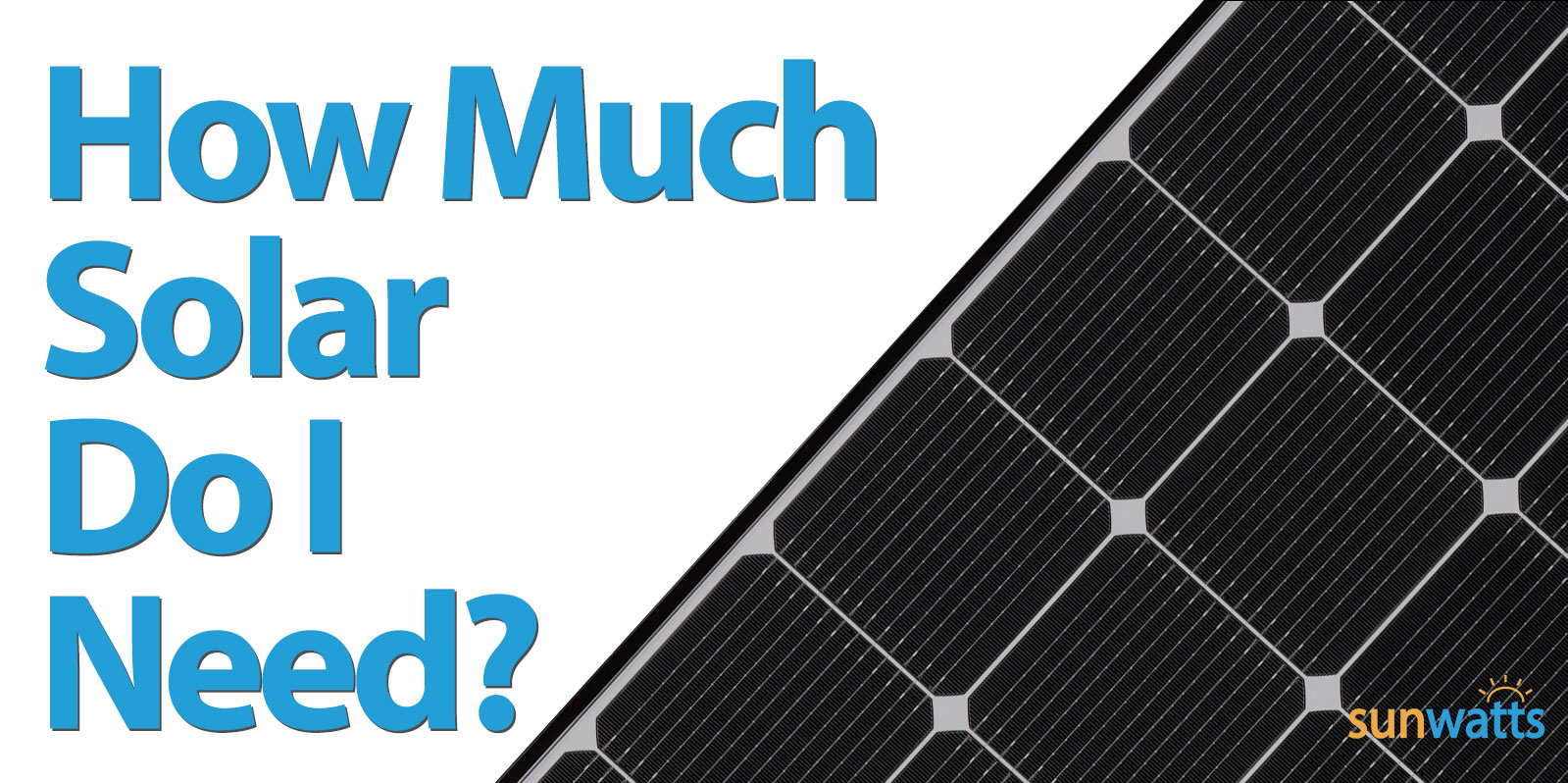How to calculate how much solar you need
Calculating the amount of power required for your photovoltaic (PV) system is an essential step in choosing the right system to fit your lifestyle and budget. The easiest way to determine how much solar power you will need is by performing an energy assessment. An energy assessment is simply an evaluation of how much energy you use today and a calculation of how much solar power generation is required to meet the needs of your household or business.
How much utility energy do I use?

Energy usage varies depending on the time of the year, the number of people residing, and lifestyle. To determine how much utility energy you use, start by collecting your monthly electric utility bills from the past year, and identify where they note the kilowatt-hours or kWh consumed. Most utility bills will include the current month, last 12 months, and the average daily kilowatt-hours used in the home or business. With the information found in the utility bills, calculate the annual kWh used for the most recent 12 months. Take note of the monthly variance to understand your high and low consumption throughout the year.
How much solar energy do I need?
If your home or business connects to the grid, then the amount of solar energy needed will vary from 50% to 100% of the annual kWh used. The percent of the power bill to offset generally depends on the available space and the budget for the PV system. For grid-tied systems, the solar panels will typically generate more power than is needed in the home or business during the daytime. Any excess power generated by the system is sent back to the grid resulting in your utility meter to spin backward. The utility company will credit your account for the extra power. This process is known as net metering.
Off-grid systems require a more detailed calculation to determine the energy load needed in AC kWh. This calculation uses information about every device that demands energy - how much power it draws, how long and how frequently it is turned on.
The power consumption of each device is recorded in Watts. To calculate the power a device will use over time, multiply the power consumption by the hours of use. For example, if you have a 75-watt light bulb turned on for 1 hour, it will consume 75 watts or 0.075 kWh.
How many Watts of solar power do I need?
Using the solar power calculator, enter your annual kWh from the utility bill or off-grid load estimate. Next, enter the daily sun hours for your location by reviewing a solar power map. Lastly, enter the percentage of your utility bill that you would like to offset with your solar PV system. Calculate these three factors to find the DC watt size needed.
Once you determine the amount of power you need in relation to your location, you can then select a PV system that will fit your lifestyle and budget. Remember that there is no rule that you have to offset 100% of your current energy use.
Shop our wide selection of solar kits to find the PV system that fits your needs!
Recent Posts
-
Unlocking the Financial Potential of Solar Energy: Evaluating Payback and ROI
Are you considering solar power for your home or business? You're not alone. Solar energy has become …Jun 13th 2024 -
Choosing the Right Solar Battery Backup System
Thinking about solar panels for your house? But what happens when the sun goes down? Here's where so …Jun 13th 2024 -
Harnessing the Power of the Sun: Solar Monitoring with Smart Technology
Switching to renewable energy sources is speeding up as the world deals with climate change and the …Jun 3rd 2024
